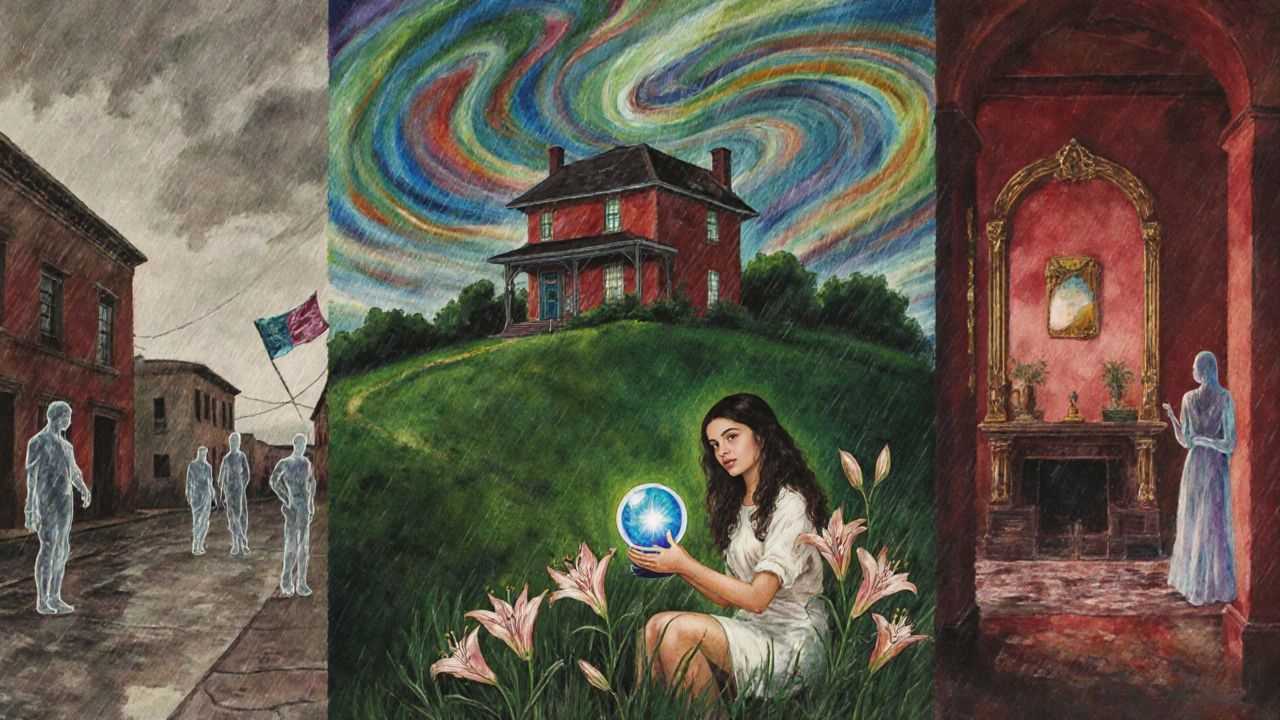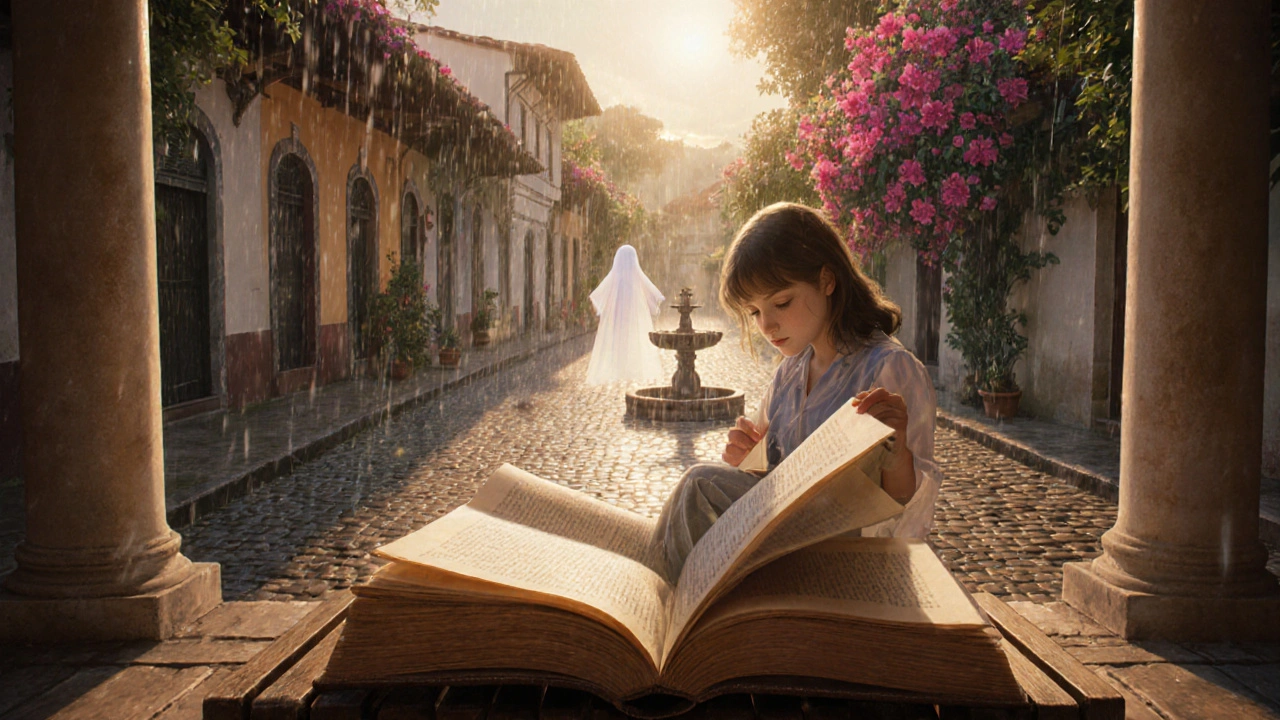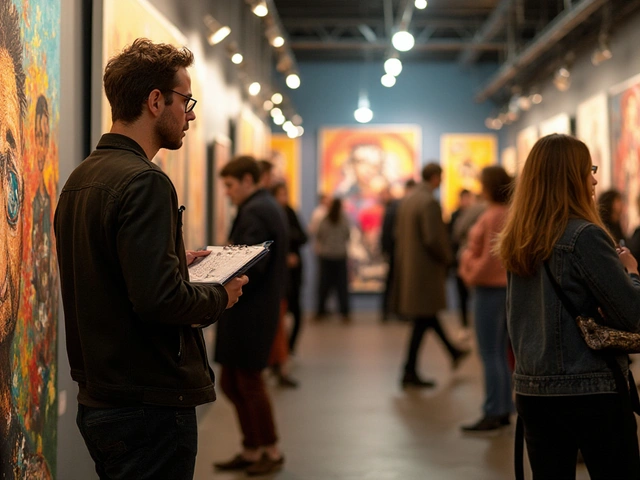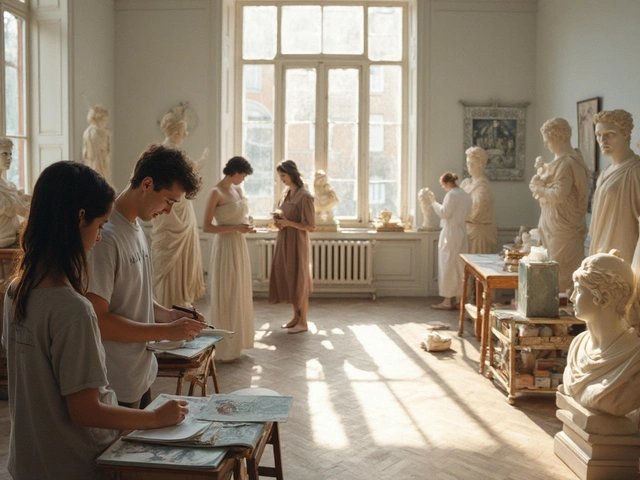Magical Realism Spotter Quiz
Test Your Analysis Skills
Analyze a passage using the 5 core traits of magical realism. Enter a literary excerpt and check which elements it contains.
Analysis Results
0 traits detectedAnalyze your passage above to see magical realism traits detected
Key Traits Explained
Supernatural events described without fanfare
Ordinary locations with mythic geography
Past, present, and future blending together
Fantasy masking social/political critique
Smells, colors, and textures grounding the magic
When you pick up a novel that feels like a dream you’re actually living, you’ve stepped into magical realism. This style fuses ordinary life with uncanny, almost mythic events, and it’s the beating heart of much of Latin American literature. Below we’ll unpack what makes this genre tick, point you at the must‑read titles, and give you a practical cheat‑sheet for spotting (or writing) magical realism yourself.
Magical Realism is a literary mode that presents fantastical elements as normal parts of everyday reality. It doesn’t ask the reader to suspend disbelief; it simply treats the extraordinary as if it were a routine detail of life.How Magical Realism Began in Latin America
The roots trace back to post‑World War II cultural shifts, when writers sought to voice the region’s complex history - colonisation, political turmoil, and indigenous myths - in a single narrative language. In the 1940s and ’50s, a loose group of writers, later called the “Boom,” pushed boundaries, and magical realism became their lingua franca.
Core Traits You’ll Spot in Any Magical Realist Work
- Matter‑of‑fact tone: Supernatural events are described without fanfare.
- Hybrid settings: Rural villages sit alongside bustling cities, often layered with mythic geography.
- Fluid time: Past, present, and future mingle; generations repeat like echoes.
- Political undercurrents: Fantasy masks critique of authoritarian regimes, land reform, or social inequality.
- Rich sensory detail: Smells, colours, and textures ground the reader before the magic arrives.
Iconic Authors and Their Signature Works
Gabriel García Márquez (Colombia, 1927‑2014) gave the world One Hundred Years of Solitude in 1967. The novel follows the Buendía family over seven generations, weaving ghosts, rain that lasts four years, and a plague of insomnia into a seemingly ordinary town. Márquez’s prose shows how personal memory and collective myth can coexist.
Isabel Allende (Chile, born 1942) blends family saga with political upheaval in The House of the Spirits. The narrative jumps from the early 20th‑century estate to the Pinochet era, peppered with clairvoyant grandchildren and lingering spirits that act as both plot devices and cultural symbols.
Juan Rulfo (Mexico, 1917‑1986) offers a darker, stark version of the genre in Pedro Páramo. The protagonist walks through a ghost‑town where the dead converse with the living, turning the landscape into a literal memory‑scape.
Jorge Luis Borges (Argentina, 1899‑1986) is often grouped with magical realists, though his work leans toward speculative fiction. Short stories like “The Aleph” collapse infinite space into a single point, showing how the genre can flirt with pure philosophy.

Magical Realism vs. Realism vs. Fantasy: A Quick Comparison
| Aspect | Realism | Magical Realism | Fantasy |
|---|---|---|---|
| World Setting | Everyday, historically grounded | Everyday world + subtle supernatural | Entirely invented realms with distinct laws |
| Tone for the Fantastic | None | Matter‑of‑fact, no explanation needed | Often epic, explanatory, or whimsical |
| Purpose of the Unusual | None | Reveal cultural, political, or psychological truth | Entertainment, myth‑building, moral allegory |
| Typical Authors | Charles Dickens, Gustave Flaubert | María Luisa Borge, Carlos Fuentes | J.R.R. Tolkien, George R.R. Martin |
Reading Checklist: How to Spot Magical Realism on the Fly
- Notice if a bizarre event is described with plain language (e.g., a character who never ages).
- Look for indigenous folklore or myth that appears without footnotes.
- Check whether the narrative voice treats the magical as ordinary.
- Identify social or political commentary hidden behind the fantastical layer.
- Observe cyclical time - characters often repeat names, actions, or destinies.
Writing Tips for Aspiring Magical Realists
- Start with a strong realistic base. Ground your story in a specific place, cuisine, or dialect before adding wonder.
- Make the magical element a character. Give it motives or a backstory that mirrors the human drama.
- Use sensory detail to blur the line. Let the smell of rain accompany the appearance of a flying horse.
- Let the community accept the magic. If characters question it, you risk breaking the genre’s core calm.
- Link the surreal to a social truth. Whether it’s land reform, gender roles, or exile, let the fantastical highlight real issues.

Why Magical Realism Still Matters in 2025
Today's global challenges - climate crisis, migration, digital echo chambers - feel surreal in everyday life. Readers turn to magical realism because it mirrors that unease without resorting to dystopia. New voices from Brazil, Peru, and even diaspora communities in the U.S. are expanding the tradition while keeping the core formula intact.
Further Exploration: Books, Essays, and Films
- Chronicle of a Death Foretold - García Márquez (short‑novel, tight look at honor codes).
- Like Water for Chocolate - Laura Esquivel (Mexican culinary magic).
- The Invention of Morel - Adolfo Bioy Casares (argentinian sci‑fi hybrid).
- Essay: “The Power of the Fantastic in Latin American Narrative” - Arturo Arias (critical framework).
- Film: Pan’s Labyrinth (Guillermo del Toro) - illustrates how visual media borrow magical realist motifs.
Frequently Asked Questions
What distinguishes magical realism from pure fantasy?
In magical realism the unbelievable is presented as ordinary, while fantasy usually builds an entirely new world with explicit rules for the magic.
Which Latin American novel is the best starter for new readers?
Most scholars recommend One Hundred Years of Solitude because it showcases the full range of magical realist techniques while remaining accessible.
Can contemporary writers outside Latin America use magical realism?
Yes. The style has been adopted worldwide, but to stay true it should respect the cultural roots-often by weaving local myths into the narrative.
How does magical realism address political oppression?
Authors embed critiques in allegorical supernatural events-like a town that forgets its own history, symbolising state‑sanctioned amnesia.
What are common pitfalls for writers trying this genre?
Over‑explaining the magic, using it as a gimmick, or ignoring the cultural context can break the seamless feel that defines magical realism.
Whether you’re a reader hunting for the next mind‑bending novel or a writer itching to blend myth with daily life, magical realism offers a toolbox that’s both ancient and surprisingly modern. Dive into the titles above, pay attention to the checklist, and let the magic slip into your everyday reading.




